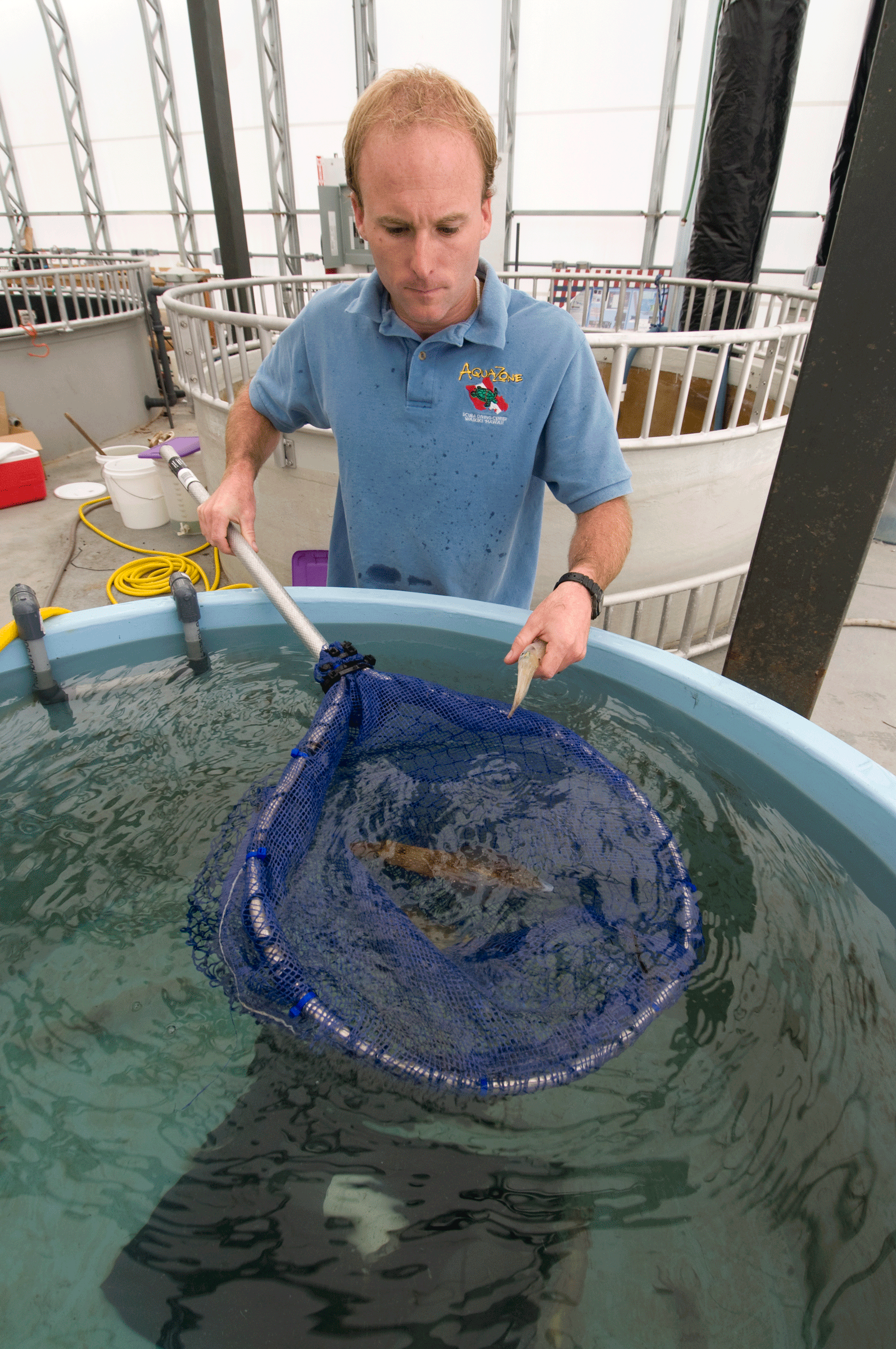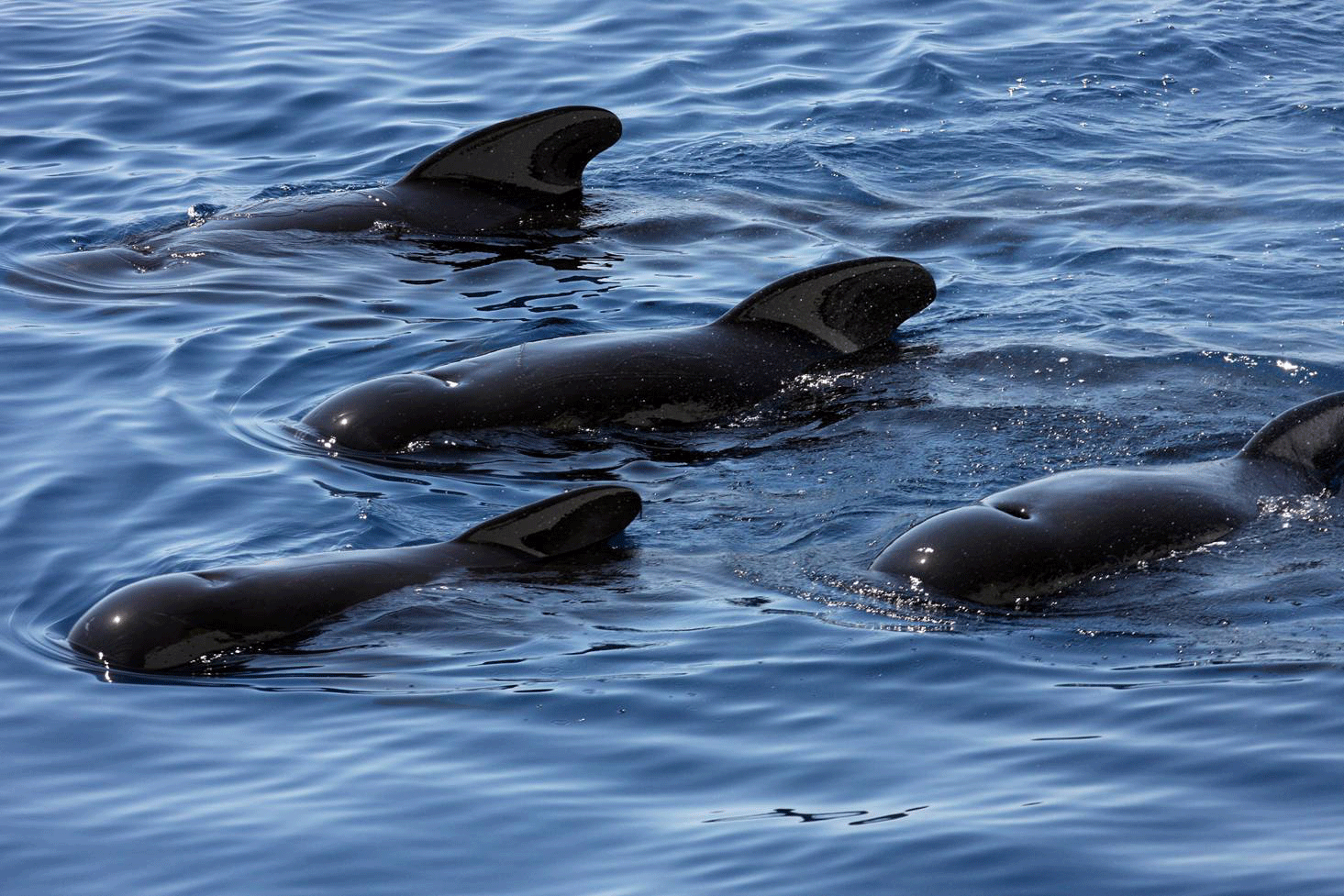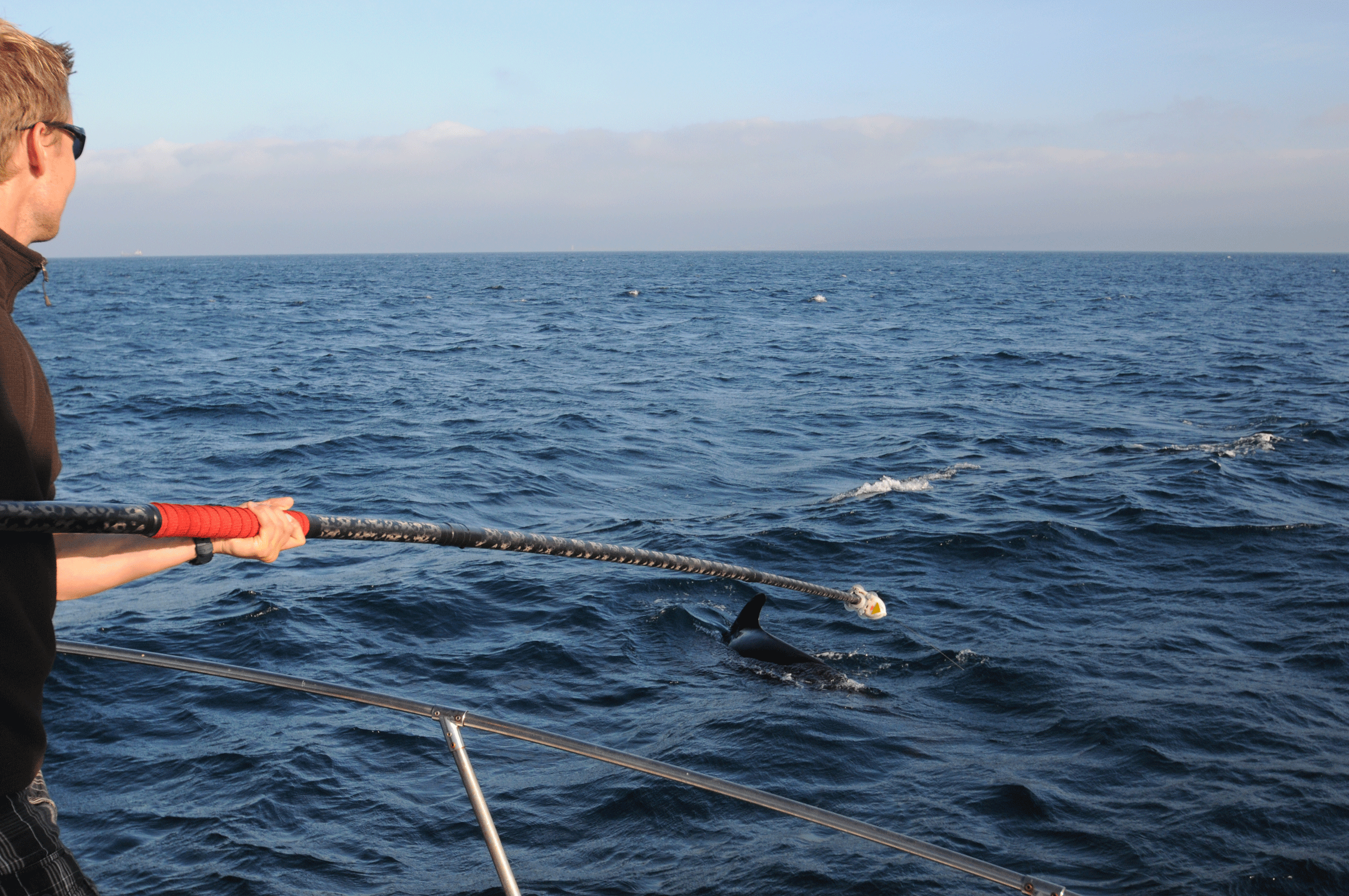from PRI’s Environmental News Magazine
Sounds of the Sea / Jennifer Jerrett
(stream / mp3)
The ocean is a noisy place and human activity is making it worse. Jennifer Jerrett reports that biologists studying the role sound plays in the sea are making surprising discoveries among some squishy marine life forms.The ocean is a noisy place and human activity is making it worse. Jennifer Jerrett reports that biologists studying the role sound plays in the sea are making surprising discoveries among some squishy marine life forms. (8:00)
Transcript
CURWOOD: Oceans cover 70 percent of the planet, and though we’ve been traveling over them for millennia, and diving under them for over a century, they still hold many secrets. Among those mysteries are many of the strange creatures beneath the waves — and marine biologists are getting a new understanding of the role that sound plays for some of them. And as the sounds we humans create in the seas increase, deepening that understanding becomes more urgent. Reporter Jennifer Jerrett visited the Woods Hole Oceanographic Institution, and has our report.
[SOUNDS OF D-TAG SIGNAL AND BOAT SPLASHING ON WAVES. MAX BERNARD OFF MIC: “SO ARAN, ARE YOU READY?”]
JERRETT: On the video I’m watching at the Woods Hole Oceanographic Institution, four scientists are clustered toward the front of a 27-foot Boston Whaler. One guy is hanging over the water off a skinny platform at the front of the boat. He’s got an ankle wrapped around the rail to keep from falling in. He’s very gingerly trying to attach an acoustic monitoring tag, or a “D-Tag” to a dolphin.
[SOUNDS OF PLACING THE TAG. PERSON ON THE BOAT SAYING “THERE YOU GO!”]
JERRETT: Aran Mooney is the team leader for this operation.
MOONEY: I really love working with, um, that dolphin or that squid. I really like kinda being able to work with and address an animal that I can see and hold and touch and look at.
JERRETT: Aran Mooney is a marine biologist at the Woods Hole Oceanographic Institution. He specializes in sensory ecology and bioacoustics. This means he studies the role that sound plays for animals in the ocean.
[SOUNDS OF DOLPHIN CLICKS]
JERRETT: The dolphins he studies are well-known sound specialists. They use sonar, or echolocation, to map their underwater world.
[MORE DOLPHIN CLICKS]
JERRETT: To put it in human terms, they basically ‘see’ with sound. And dolphins also use sound to communicate.
[ SPLASHING AND DOLPHIN CHIRPS, THEN LOW-FREQUENCY RUMBLING SOUND OF BLUE WHALE]
JERRETT This blue whale uses sound to communicate, too, and it’s possible blue whales are calling to each other across entire oceans. Over hundreds, or even thousands of miles.

WHOI biologist Aran Mooney gently lifts a squid from a tank in the Environmental Systems Lab. (Woods Hole Oceanographic Institution)
JERRETT: Of course, humans make sounds in the ocean too, and some of those sounds, like boat traffic and offshore industrial activity, are making the ocean a lot noisier.
[OFFSHORE INDUSTRIAL NOISE]
JENSEN: So, one of the things that are concerning us about marine mammals these days is noise pollution.
JERRETT: That’s Frants Jensen, another bioacoustics researcher at the Woods Hole Oceanographic Institution.
JENSEN: We’re putting out a lot of noise into the ocean.
JERRETT: As Jensen’s D-tag recordings reveal.
JENSEN: So. The sequence I’m gonna play here is from a bottle nosed dolphin instrumented with another D-Tag. You’ll hear the animal swimming around and then you’ll hear a loud vessel passing close by. And this is not just a one-time occurrence. This is in a very busy area with respect to recreational vessel traffic.
[SWISH SOUND OF DOLPHIN SWIMMING FOLLOWED BY SOUND OF VESSEL FAR AWAY]
JENSEN: So now you can hear the vessel approaching.

Long-finned pilot whales roam in large pods with hundreds of individuals and cluster in smaller groups like this one, photographed in the Alboran Sea (Western Mediterranean) during a WHOI research expedition in 2011. (Woods Hole Oceanographic Institution)
[SOUNDS OF VESSEL GETTING CLOSER, PASSING AND MOVING AWAY]
JENSEN: So as you can hear this is quite an increase in noise levels and in noise that actually stretches quite far up into echolocation frequencies. So this can be pretty important for the animals.
JERRETT: Jensen says that a noise like that could interfere with a dolphin’s ability to communicate, to find food or to avoid predators. There’s a growing body of evidence that noise affects both the behavior and the physiology of dolphins. Much of the work that’s been done in marine bioacoustics has focused on these animals. As Aran Mooney says…
MOONEY: They’re sorta the laboratory mouse of the marine mammal world.
JERRETT: What’s new is what scientists are learning about the role of sound for other, more unusual, sea creatures, like the squid. Back around 2008, Aran Mooney made a discovery. Not only do squid detect sound, but they do so in a pretty wild way.
MOONEY: The best way to kinda think about how squid detect sound is to kinda think about fruit in Jell-O.
JERRETT: You heard that right; fruit, in Jell-O.
MOONEY: So sort of that Midwest delicacy where you kinda make your salad with the fruit in the Jell-O. The squid being the fruit and the Jell-O being the water column. And how squid detect sound is that essentially the sound wave literally vibrates them or moves them back and forth.
JERRETT: So, squid can feel themselves getting physically jostled by the sound wave. Essentially, they hear with their whole bodies. But squid aren’t necessarily using sound to talk to each other. Instead, they might be using sound in some unexpected ways.
It’s a really new idea, but Mooney is beginning to think that young squid along with other larval invertebrates might use sound to navigate – that they cue in to the ambient sounds around suitable habitats, sounds made by waves, snapping shrimp or other animals that are common in those habitats.
[(SOUNDS OF SNAPPING SHRIMP AND DACYLLUS]
And Mooney’s latest research suggests that adult squid might rely on sound for different information – to alert them that predators are nearby.
MOONEY: The thing about working with squid is that there’s a range of responses. They can ink, they can change color and they can jet, meaning that they can swim away really fast and when we play a really abrupt predator type sound they do all three: they ink in the water, they swim away really fast and they’re doing color changes at the same time.
JERRETT: Is this something that has surprised you?
MOONEY: It’s definitely sort of surprising I feel like to a lot of the marine community. The fact that maybe we’re seeing some differences in adults and young is pretty neat. And, um, the fact that there’s a key way that these guys are interacting with their environment and other animals that we didn’t know about, that’s pretty awesome. Pretty astounding.

Frants Jensen tagging pilot whales in the Strait of Gibraltar. This research was performed under NMFS Marine Mammal Permit number 14241. (Woods Hole Oceanographic Institution)
JERRETT: Mooney doesn’t know yet whether squid are affected by human created noise. That’s one of his next projects. And he’s looking at the relationship between sound and human activity in the ocean in other ways, too. His team is putting recorders in the ocean to monitor acoustics at the site of America’s first proposed offshore wind farm — in Nantucket Sound. They’re listening for what’s out there; both before and after the wind turbines go in.
[QUIET AMBIENCE OF NANTUCKET SOUND]
MOONEY: We want to know how those different patterns change; how often does the animal habitat use of the area change or how does the human habitat use change. It’s actually kind of an interesting place ’cause it’s relatively quiet. So um it might be a really great place to put a wind farm. We don’t know quite what to think about it yet.
JERRETT: Incorporating sound monitoring into offshore environmental planning is a pretty new approach. It’s another way science can help people understand what’s at stake with increasing human activity in the ocean. To start asking questions about what we should and shouldn’t do. Frants Jensen puts it this way.
JENSEN: From a policy perspective, I think it’s very important to strike a balance between being conservative and commercial development and we need to listen to what we can actually say with our data. Of course, there’s going to be some impacts if you’re putting out a water turbine or a wind turbine during offshore construction. What we really need to find out as researchers is how big those impacts are and whether, for that sake, they’re worth the cost.
JERRETT: As humans put more pressure on ocean habitats and the creatures that live there, bioacoustics and the role of sound will have more to tell us. For now, Jensen and Mooney plan to keep listening.
In Woods Hole Massachusetts, I’m Jennifer Jerrett.
